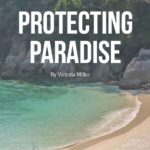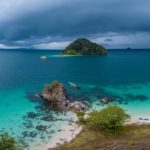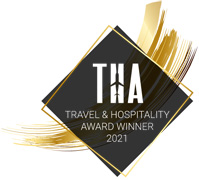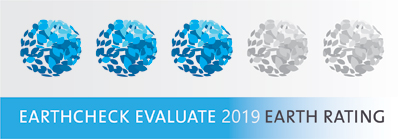
Lack of infrastructure has protected the Myeik Archipelago in the Andaman Sea from the ravages of tourism, but for how much longer? Picture 800 or so islands surrounded by beaches of white sand and backed by lush green forest, rising out of a translucent, turquoise sea on which fishing boats and a handful of yachts and speedboats are the only traffic. Then contemplate the fact that just 3,000 visitors a year stay overnight in this island chain in Southeast Asia, despite the southernmost islands being less than 200km north of Phuket, one of the world’s most popular destinations for a tropical beach break.
Welcome to the idyllic Myeik Archipelago, which is at the forefront of Myanmar’s efforts to boost tourism to the country. Strewn like green pearls across a 400km stretch of the Andaman Sea west of Myanmar’s southern coast, and home to only a tiny population of sea gypsies and settlers from the mainland, the archipelago was completely off limits to foreign travellers until 1997. Even now, a permit is required for those who wish to visit on anything other than a day trip to the islands closest to the coast.
For the Myanmar government and companies eyeing potential resorts and hotels, the archipelago offers a rare opportunity. The question is how to open it up without affecting the natural environment.
“We have about 1,385 miles [2,200km] of coastline and most of it is undeveloped. Marine tourism can be very big for Myanmar,” says Hla Aye, of the Tanintharyi Tourism Development Committee, which was set up in 2016 to attract more visitors to Tanintharyi Region, Myanmar’s southernmost province, and the islands off it. “But it has to be done in a sustainable way.”

Myanmar saw only a tiny number of tourists until 2011, when the junta that had ruled the country for almost 40 years stepped down. With the election of an Aung San Suu Kyi-led government, in 2015, and the gradual opening up of areas previously barred to foreigners, numbers have steadily risen. But nearly all visitors follow a well-worn path on the mainland, between the major cities of Yangon and Mandalay, the temples of Bagan and Inle Lake, all much further north.
Phuket is an example for us. It’s world famous. Here in Myanmar, we have 800 islands that are similar and, in some cases, better. But people don’t know about them
Hla Aye, of Tanintharyi Tourism Development Committee
Getting some of them to travel to the Myeik islands, also known by their former name of the Mergui Archipelago, is the goal. “Phuket is an example for us,” Hla Aye says. “It’s world famous. Here in Myanmar, we have 800 islands that are similar and, in some cases, better. But people don’t know about them.”
Almost all tourists who visit the archipelago do so either on day tours on speedboats from the port of Myeik, to the less attractive islands in the north of the chain, or on liveaboard yachts that depart from Kawthoung, Myanmar’s southernmost town and a 30-minute boat ride from Ranong, in Thailand. I have joined a four-day trip run by Moby Dick Tours in Yangon, on its boat Sea Gypsy, a sturdy, double-decker Burmese-style junk in yellow and green, with simple but comfortable cabins featuring teak fittings.
Within an hour of departing Kawthoung, the remote nature of the southern islands, the real jewels of the archipelago, becomes apparent. Mobile phone signals disappear and will not come back until we near Kawthoung on our return, four days later. Islands dot the sea, some large with numerous bays, others mere islets, but all thickly forested limestone formations fringed with pristine beaches, some of which we anchor at to snorkel or kayak.

Apart from the sea eagles floating above us, our only company are fishing vessels, mostly ramshackle boats from Kawthoung. Some operate through the day, others at night, with halogen lights to attract squid. Sea Gypsy’s freezers are well stocked with food, but sometimes the crew, joined by curious passengers, jump into a dinghy and speed over to a fishing boat to negotiate for some of the day’s catch. A kilo of freshly caught barracuda can be bought for HK$60.
But it is those fishing boats that pose the greatest threat to the islands, according to environmentalists. “The Myeik Archipelago is always portrayed as a paradise. It isn’t,” says Frank Momberg, Myanmar country director for Fauna & Flora International (FFI), a British NGO that has been researching sustainable tourism in the region for the past two years. “A lot of coral reefs and marine habitats have been destroyed by overfishing. There are 8,000 to 10,000 near-shore boats alone, too many for the fishing area.”
Now, speedboat tours in the north of the archipelago are presenting more hazards to the environment. “Day trippers are often people who can’t swim or snorkel and they trample all over the reefs,” Momberg says.
Illegal dynamite fishing occurs, too, with the sea gypsies, known as the Salone in Myanmar, often getting the blame for blasting away reefs. But the sheer number of trawlers in the region means it is now hard for the Salone to find enough fish to sustain themselves.

Unlike on the Thai islands, however, there are still only a handful of villages and resorts in the archipelago. Small settlements of sea gypsies – no longer truly nomadic – and migrants from the mainland can be found on a couple of islands while the Myanmar navy has bases on a few, but almost all remain uninhabited and completely undeveloped, lacking accommodation, electricity, fresh water, paths and roads.
So far, the government has granted licences to construct resorts on just 12 of the islands. But with no public ferries, the difficulties and high costs of building and maintaining hotels mean that only four are currently operating, one of which is the Boulder Bay Eco-Resort, on Boulder Island.
“It’s a remote island, so everything has to come from the mainland,” says Bjorn Burchard, a Norwegian who has lived in Myanmar since 1993, and who opened Boulder Bay in 2015. “We brought in solar panels to generate our own power, wood for the bungalows because we didn’t want to cut down the trees on the island. Food has to be shipped in. The workers have to come by boat from Kawthoung, which is five to six hours away. We have Wi-fi, but if there is an internet problem, it can only be fixed on the mainland.”
Boulder Island is on the western edge of the archipelago, and Burchard chose it after months of searching. “Boulder is small and quite flat, so it’s easy for guests to walk around. Many of the islands are hilly and covered in very dense forest. It would be a trekking holiday rather than a beach holiday,” he jokes. “And, of course, the further you are from the mainland, the better the water visibility is. Boulder has some of the best visibility for diving and snorkelling in the archipelago.”
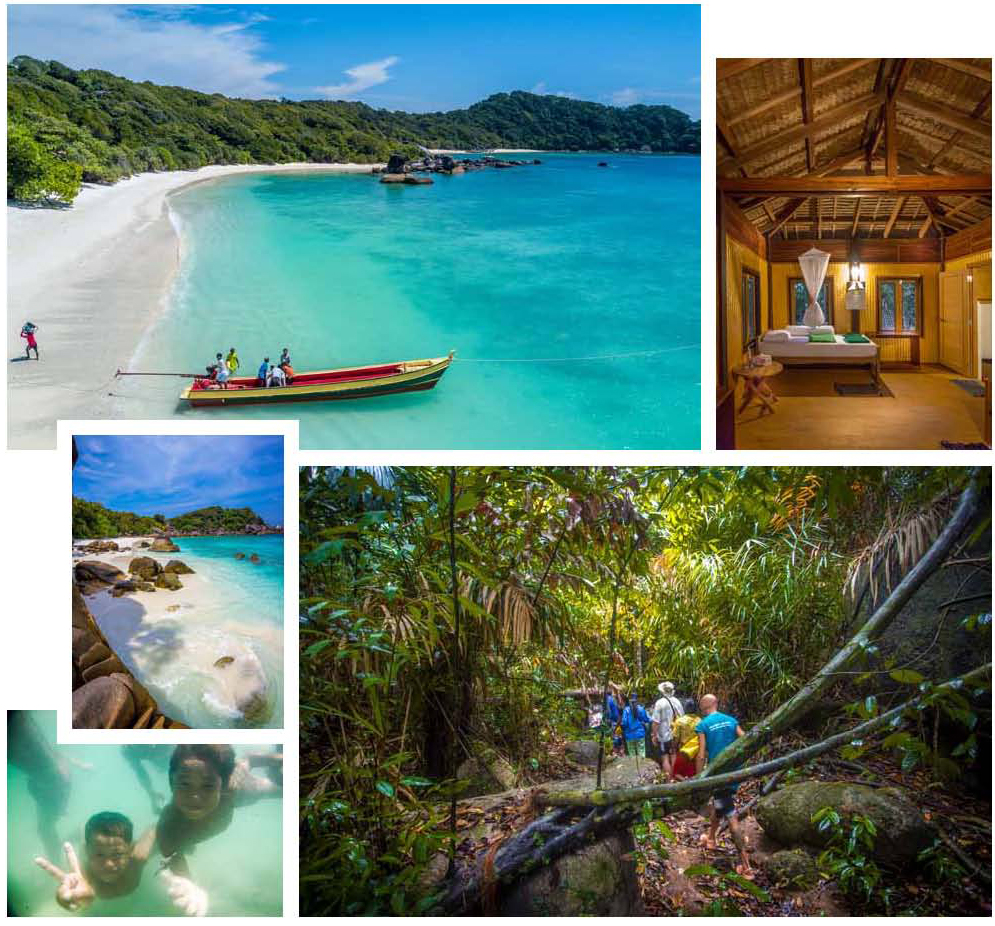
When Sea Gypsy cruises into the horseshoe-shaped bay of Boulder Island, with its dazzling, crescent-shaped beach, the water is so clear that you can look down from the deck and see all manner of brightly coloured fish. Divers have long been drawn to the Myeik islands, but with no diving operators in Myanmar, all arrive on tours run from Phuket or Ranong.

“Most of the liveaboard yachts are foreign-owned, so they don’t benefit the locals. We’d like to see partnerships with local people,” Hla Aye says.
Behind the white-powder beach lies a tangled wilderness of untouched forest. A 20-minute walk through it brings me to Moken Bay, on the other side of the island, where some of the best coral can be found just offshore. But as I snorkel, the dangers posed to the reef are brought home. A fishing boat chugs into the small bay and drops its anchor directly onto the coral, before disposing of rubbish overboard.
“All the fishing means a lot of nets and anchors being dropped and that really hurts the coral,” says Oshin Christopher, a British marine biologist working on a reef restoration project on Boulder. “Rising temperatures have killed a lot of coral, too. You’d expect to see big predators like sharks, rays and turtles around these reefs, but there are no big fish here because there aren’t enough small fish for them to feed on. The damage to the coral has interrupted the whole food chain.”
Like every region in Myanmar, Tanintharyi and the Myeik Archipelago needs massive investment in all areas, which means no one is expecting either the central or local governments to provide any real cash to boost tourism. A public ferry service to the islands remains a distant dream and that, as well as the need for all items to come from the mainland, has environmental benefits.

The islands’ remote nature makes a stay here significantly more expensive than in Thailand, and a liveaboard tour remains the most cost-effective way to visit the archipelago, which pleases Momberg. “Restricting the reefs that have survived to yacht tours, dive tourism and responsible development will mean the archipelago has a future,” he says. “But if jungle is cleared for resorts, jetties erected for boats, and there isn’t proper waste-water management, that is completely unsustainable.”


